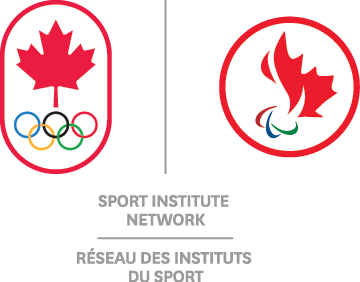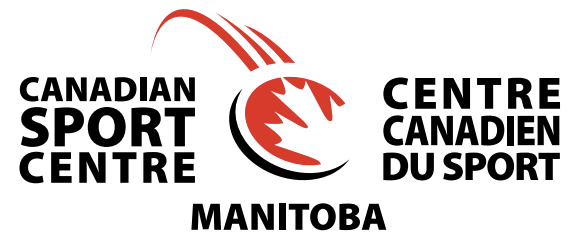Week 4: Maintaining Balance
Mental Performance
Life is full of successes and failures, opportunities and challenges, thrills and disappointments. When going through these highs and lows it can be easy to get distracted from the things that are important to you. Learning to maintain a sense of balance in how you think, feel, and act can help you withstand the struggles and keep you aligned with your priorities.
Balanced thoughts: Watch out for all-or-nothing, black-or-white thinking like, “Nothing is ever going to go right for me” or “Anything short of winning isn’t good enough.” Remember that in all likelihood reality is somewhere in between.
Balanced emotions: Practice identifying and naming your emotions. A tool like an Emotion Wheel or Marc Brackett’s Mood Meter (available here as a pdf chart for download or an app for tracking) can help you get more specific about what you’re feeling. If none of those words are quite right, that’s alright too. Sometimes it’s just as helpful to identify what you’re not feeling as what you are feeling.
Whatever you end up naming your emotions, you can also practice welcoming them. Getting comfortable living in the full range of your emotional experience means you’re ready to handle whatever life throws at you. Treat your emotions like a guest coming to visit before they continue on their way.
Balanced actions: When life feels like it’s out of balance and you’re struggling to find a direction, it’s a good idea to have a MAP.
Meaningful: What do you find meaningful? Learning something new, connecting with family or friends, expressing your creativity, or challenging yourself in some way are just a few examples of things you could try.
Active: Even a little bit of physical activity, whatever that means to you, can release hormones that boost your mood and alleviate stress.
Productive: Feeling like you’ve made progress or accomplished something (a bit of schoolwork, some household chores, responding to that email that’s been on your mind, etc.) can give you that bit of encouragement you need to take the next step.
If you can do all three things on your MAP in a day…amazing! If you don’t do any of them…that’s great too! The fact that you wanted to is worth celebrating and a step in the direction of your goals and values.
Dietetics
Mindful Eating Is An Art & Science For An Athlete’s Health, Well-being, and Performance!
This powerful recipe of bringing in outer and inner wisdom helps you as an athlete succeed in figuring out your unique fuelling and training plans in addition to nurturing a healthy relationship with food.
Why is mindful eating important to you as an athlete?
- It increases your awareness of your physical and emotional cues for eating and identifying non-hunger cues for eating.
- Provides you with an understanding of the impact that your training has on your body’s signals of hunger and fullness and fuelling needs. You may need to override fullness to optimize recovery!
- It teaches you how to use food for enjoyment and as nourishment and fuel.
- You can discover how you can eat for satisfaction, nourishment and satiety.
- You can develop your own strategies that foster a healthy relationship with food, reduce disordered eating, and prevent under-fuelling.
- Keeps you in a space of being reflective and curious around eating and fuelling.
Top 5 Ways You Can Be A Mindful Athlete:
- Adopt an attitude of curiosity and non-judgment
As much as you can, observe why, how, and what you are eating from a neutral perspective. Start paying attention to what hunger feels like, and how different foods make you feel.
For example: are you hungry an hour after eating; or did a certain meal keep you full longer?
- Check in with yourself before and after workouts
Stay curious and pay attention to your feelings and thoughts. If you are finding that poor quality workouts are happening more often, ask yourself why and try to identify the underlying reasons. It could be due to over-training, under-fuelling, fighting illness, feeling bored, not enough sleep, or increased stress. Try to adjust the root causes instead of just pushing through workouts because you feel you must.
- Pause Before You Eat
Take 10 seconds before eating and try asking yourself these questions: Why am I eating? What does my hunger feel like? What does my food look and smell like?
Taking a moment to pause will bring more awareness and intention to your meal and will likely increase satisfaction.
- Minimize Distractions While You Eat
To fully engage with the eating process, it’s best to try to minimize distractions. This could mean no phones, television, laptops, etc., while eating. It may not be enjoyable for you to have no distractions, especially if you are eating alone. You can try to slow yourself down and be fully present in the experience of eating.
- Practice Makes Progress
There really is no right or wrong way to do this. Each time you eat or train is an opportunity to practice being present in the moment, to tap into what your body is experiencing and how your food and exercise make you feel.
You are the expert about your unique fuelling needs. If you need help exploring that knowledge and want to determine how best to combine that with fuelling optimally for your sport, health and wellbeing, feel free to reach out!
Physical Prep
Developing maintaining balance from a fitness perspective brings up two immediate thoughts; 1. Development of balance and stability and 2. Balancing training and recovery to optimize performance.
The first topic could take several different approaches on how an athlete achieves balance in competition by developing stability and how we go about training for stability.
The second statement fits better with the intent to this week’s discussions.
Dr. Vladimir Zatsiorsky proposed his two-factor theory on performance. He stated that performance is based on the individuals built up level of fitness and their accumulated fatigue. Optimal performance would occur when fitness levels are high, and fatigue is low. This can be one of the most challenging pieces to solve in the performance puzzle. The balance between these two components can take years to fully understand. Collecting as much information about the athlete’s training and recovery markers will help the athlete, coach and support personnel find the individual balance point for that person. That balance point is never a fixed value but rather a range, understanding that range will help the athlete find the balance needed to perform at their best.



